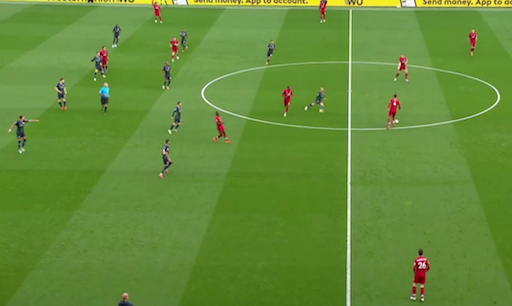WORLD CLASS COACHING
Attacking at Speed
By Luca Bertolini
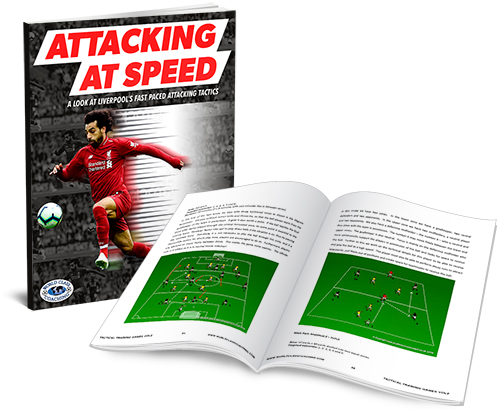
Table of Contents
PART ONE
First Game Attacking Data and Key Factors
PART TWO
Liverpool's Pressure Phase
Liverpool's Possession and Attacking Phase
PART THREE
Liverpool's Tactical Issues
Second Game Attacking Data and Key Factors
PART FOUR
Liverpool's Pressure Phase
Liverpool's Possession Phase
Problems and Solutions
First leg possession and attacking data
Liverpool and Manchester City players’ positions.
Liverpool's 1-4-3-3 was positioned with blocked center backs (Van Dijke - 4 and Lovren - 6), the fullbacks constantly pushing forward (Robertson - 26 and Gomez - 12), two alternate balance midfielders (Henderson - 14 and Wijnaldum - 5), one advanced midfielder because with pressure tasks (Milner - 7) and three close forwards (Manè - 10, Salah - 11 and Firimino - 9), who was used to drop back into the midfield zone) to leave space on the flanks for the fullbacks inside the final third.
Manchester City 1-4-2-3-1 turned to a 1-4-4-1-1 without possession, as the inverted wingers (26 - Mahrez and 7 - Sterling) dropped back to cover the flanks and David Silva (21) was usually placed behind the only center forward Aguero (10). Mendy (22) was often placed high to support the attacking move, leaving a line of three at the back (Danilo - 2, Stones - 5 and Laporte - 14). Fernandinho (25) played as balance players, as usual, and Bernardo Silva (20) was left free to move and to receive throughout the middle third.

Actions zones: the average of playing zones on the field shows the substantial balance of the match, with many transition phases inside the middle third and the same percentage of attacks in the final thirds.
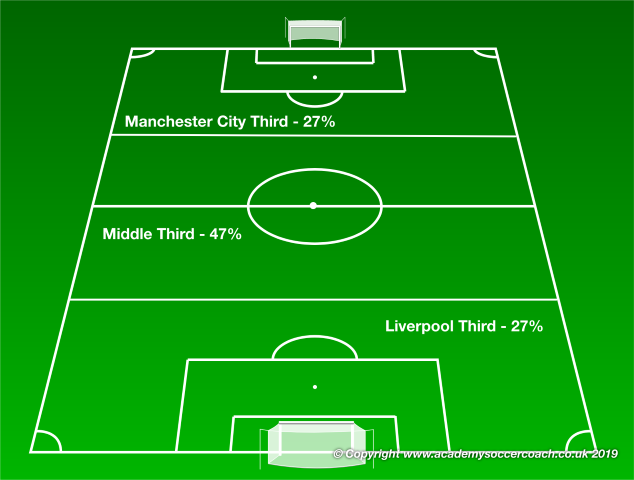
Liverpool and Manchester City heat map: Liverpool tended to build up on the right side of the middle third, developing the possession phase and to dribble up directly on the left thanks to Robertson basic speed and physical resistance. On the right side of the attack, Liverpool was used to arrive near the borderline before combining or crossing into the box. The heat map of City shows the typical building up from the goalkeeper phase, possession phase inside the center area of the middle third and a preference for attacking along the left side.
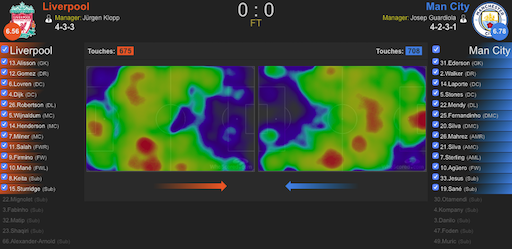
Match statistics: looking at the general statistics, the balance is again very clear, but one main difference can be noticed about the areal duel success. It looks evident how Liverpool played with long balls, trying to free its attackers in behind the opposition defense line. The number of total passes shows how Liverpool developed skills for more reasoned possession phase, when the direct play is not possible (the number of passes is very close to Manchester City).

Attacking Sides: as we already saw before in the heat map, Liverpool build up on the right side, but the attacking moves were substantially distributed among the flanks and the center space of the final third. Manchester City was more confortable in finishing along the left flank.
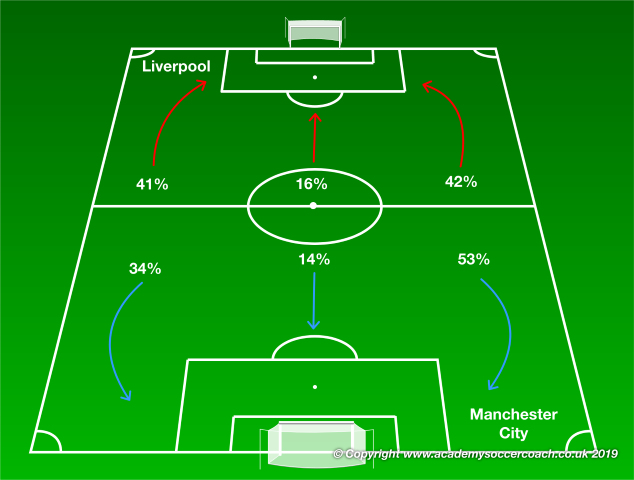
Looking at the data of the passes, it's again possible to understand as Klopp's team is more possession oriented than the last seasons; rhythm and speed of play are always very high, but the style of play is less direct. The team tries to unbalance the opposition defense line before playing vertical through passes for the forwards; Firmino often acts as an added midfielder.
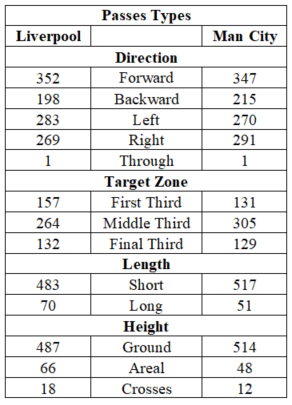
It's possible to notice, considering the chalkboard of the passes distribution, how the match was played inside the middle third and again how 18/19 version of Liverpool is a more possession team than ever, even building up from the goalkeeper, exploiting the Brazilian technique of the new goalkeeper Alisson Becker. The attacks were distributed along the flanks to overcome the pressure phase of Manchester City, thanks to quick combination patterns of play or fullbacks dribbles.
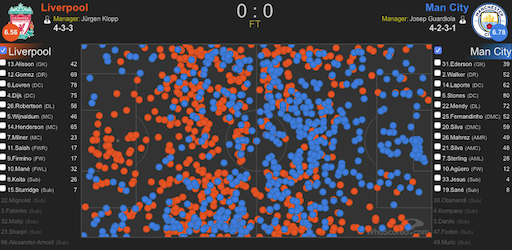
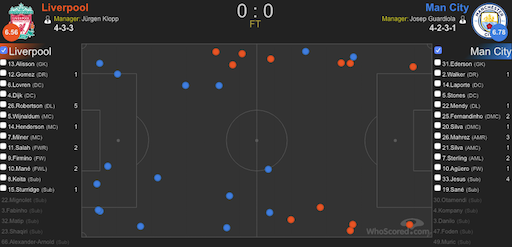
Finishing Zones: Liverpool tried to finish inside the 18y box, but as the forwards tended to drop back, it wasn't possible to finish the near the goal, inside the 6y box. Manchester City finishing options were created inside and outside the box.
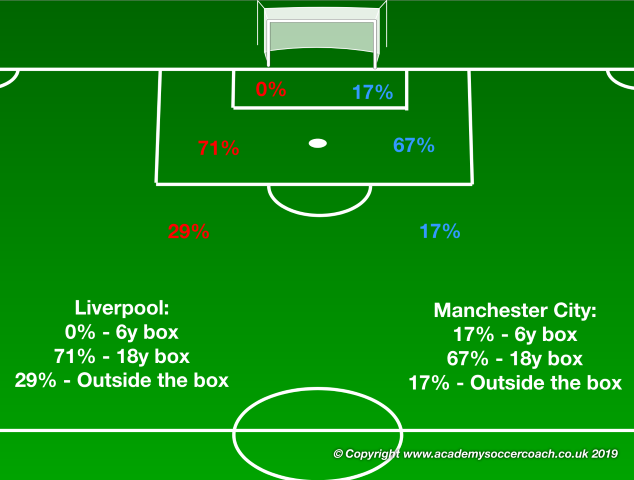
Clearances map confirms that Liverpool had to save the goal space or the 18y box more than Manchester City. Citizens defense was placed further back than usual to save the final third and to avoid passes in behind the back four line; this is the reason why a relevant number of clearances can be notice out of the box.
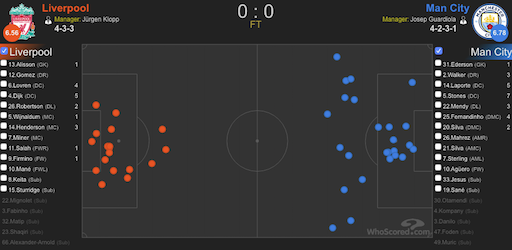
Shot Directions: Liverpool looked for through balls in behind the center backs in the final third. Manchester City distributed the finishing actions through the whole final third, exploiting the inverted wingers (Mahrez and Sterling).
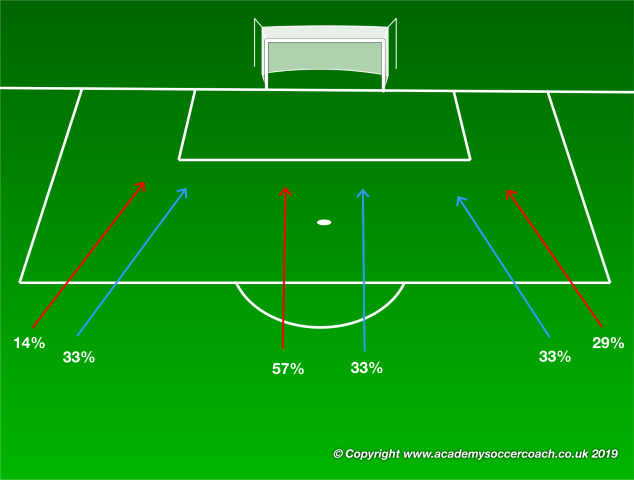
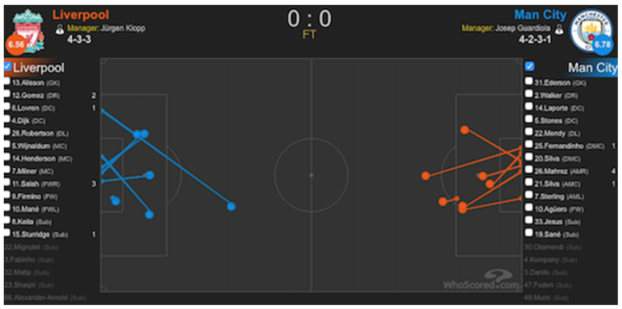
1st leg general key factors
In Liverpool line up, Dejan Lovren was included for the first time in this Premier League season, Joe Gomez played in his original right fullback role and Jordan Henderson was tasked with a balance role as Fernandinho usually does for Manchester City. The rest of the starting 11 was the usual formation of Jürgen Klopp's team 2018/2019 season.
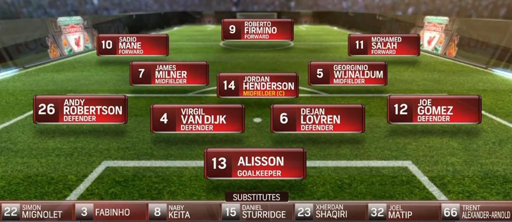
The basic familiar 1-4-3-3 was shaped on the field; Milner had a key role, as he supported the pressure phase of the advanced trio and then he covered the sides of the midfield line if Manchester City was able to play out from the first third. The formation wasn't switched during the match despite the substitutions; high (during the first 25' of the first half) and low pressure phases (especially in the second half) were alternated.
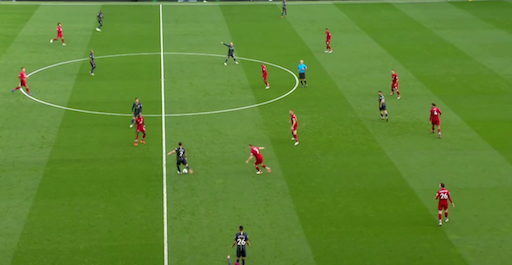
Guardiola decided to play with Aymeric Laporte and John Stones on the defense line even if they hadn't often played together prior to this game and Benjamin Mendy was included as left fullback. Bernardo Silva was tasked with deeper playmaker role, supporting Fernandinho; Riyad Mahrez and Raheem Sterling played as inverted wingers of the advanced trio.
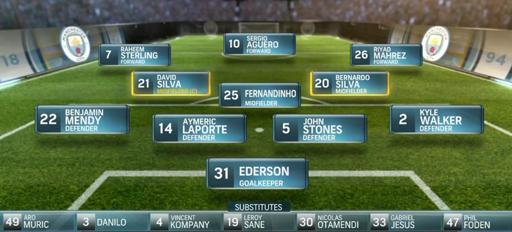
Although Guardiola placed a 1-4-3-3 structure, a 1-4-4-1-1 (4-4-2) system was then shaped on the pitch, with David Silva playing behind Sergio Aguero, or sometimes vice versa, when City was without the ball. Bernardo Silva and Fernandinho were coupled in the middle third and Mahrez and Sterling were asked to drop back covering the flanks.
